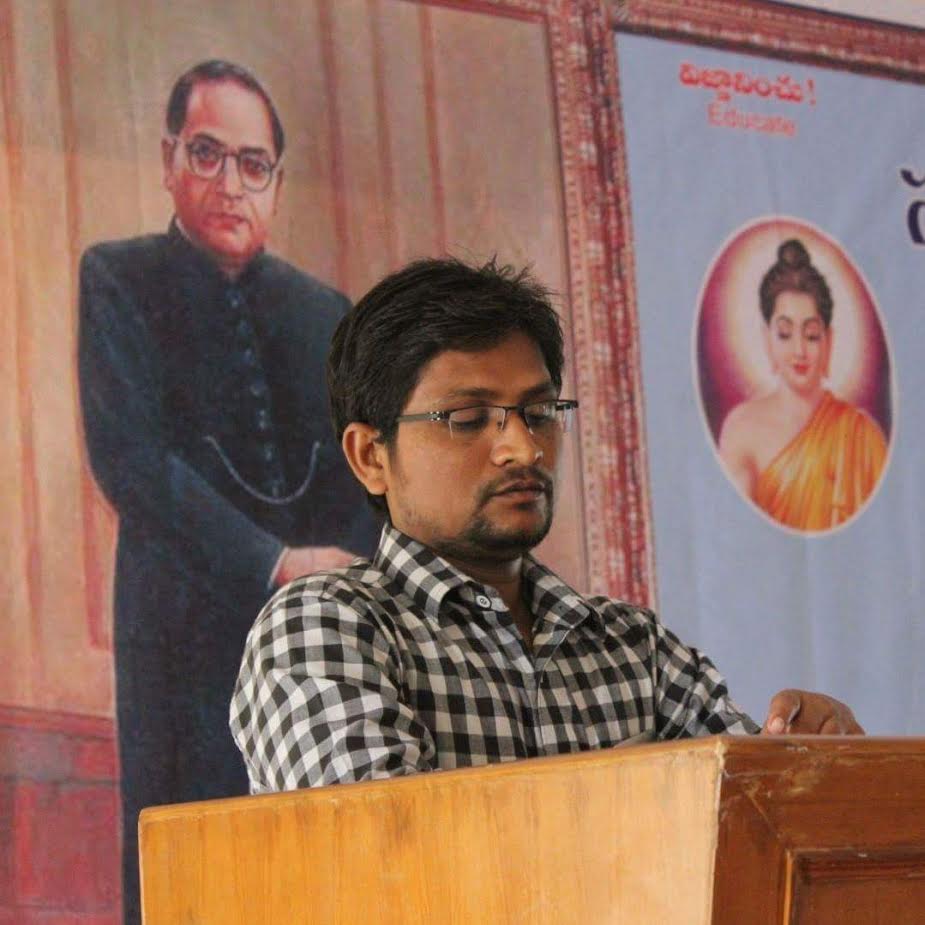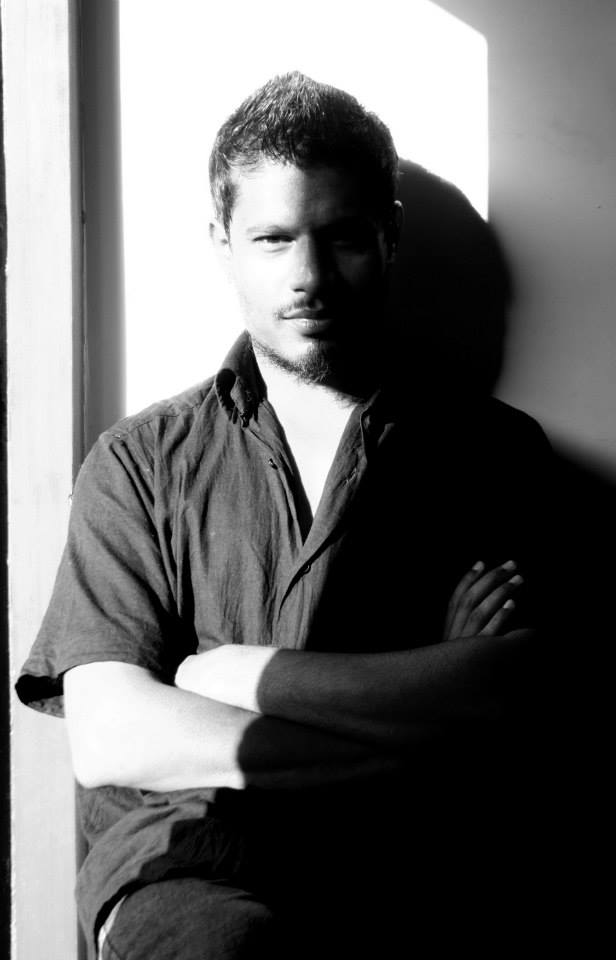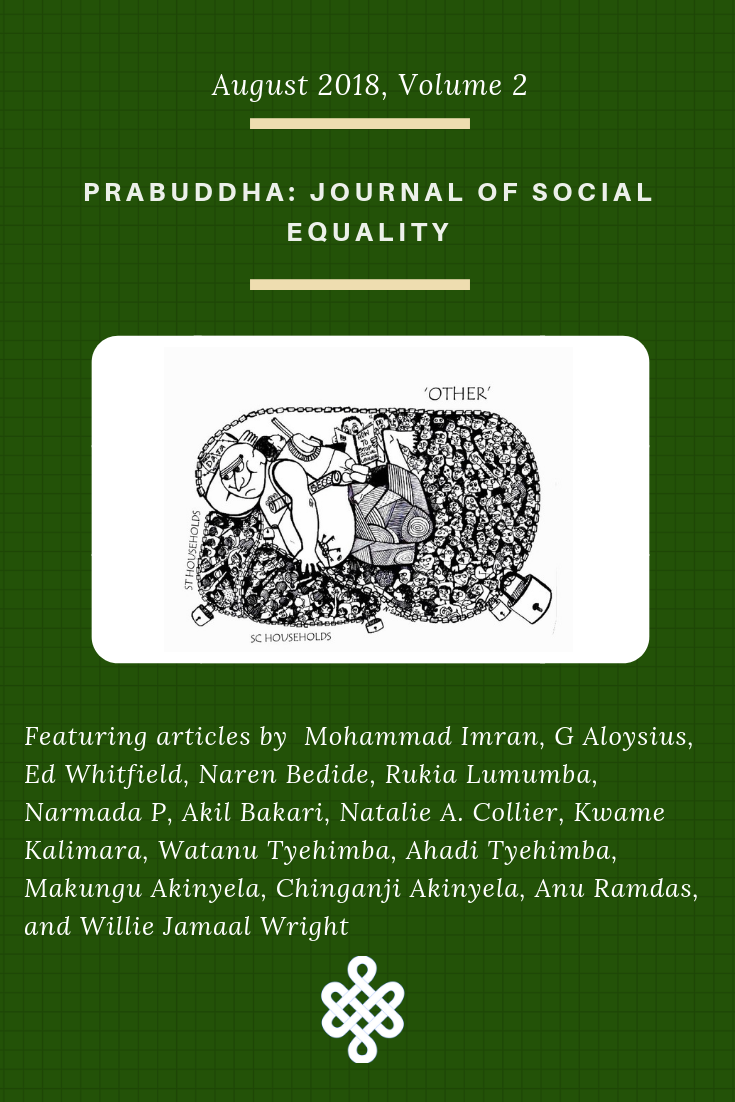Adv. Mahendra Jadhav
 When the BJP government came to power in the name of ‘Development’ and ‘Vikas’, we all believed that the dark phase of scams and corruption of the Congress government would fade away, thanks to the glorious statements of the so-called ‘modern statesman of the century’! As a common man, I too felt that as a party, the BJP should be given a fair chance, since the democratic nature of our Constitution speaks about a change in the government every five years. But regrettably, except controversies, we Indians have not seen any promises of development being fulfilled. Every day, new issues, communal tensions, caste killings, lynching innocent people for eating/carrying a certain food with them, religious abhorrence, religious impositions/sanctions on the oppressed classes and minorities have become the norm of the day. Nationalism and patriotism are being defined in a way as to facilitate certain ideologies. Students are being killed, scholars are threatened and thinkers are abused and killed in broad daylight. It’s not that these confrontations were not happening during the past government – atrocities on oppressed people and minorities have been happening since centuries – but the way in which these atrocities have become unbridled and open in the last two years has raised apprehensions as to where this great nation is heading!
When the BJP government came to power in the name of ‘Development’ and ‘Vikas’, we all believed that the dark phase of scams and corruption of the Congress government would fade away, thanks to the glorious statements of the so-called ‘modern statesman of the century’! As a common man, I too felt that as a party, the BJP should be given a fair chance, since the democratic nature of our Constitution speaks about a change in the government every five years. But regrettably, except controversies, we Indians have not seen any promises of development being fulfilled. Every day, new issues, communal tensions, caste killings, lynching innocent people for eating/carrying a certain food with them, religious abhorrence, religious impositions/sanctions on the oppressed classes and minorities have become the norm of the day. Nationalism and patriotism are being defined in a way as to facilitate certain ideologies. Students are being killed, scholars are threatened and thinkers are abused and killed in broad daylight. It’s not that these confrontations were not happening during the past government – atrocities on oppressed people and minorities have been happening since centuries – but the way in which these atrocities have become unbridled and open in the last two years has raised apprehensions as to where this great nation is heading!
We have seen several social, educational, political and ideological controversies in the past few months such as Pune’s FTII students’ issue, IIT Madras issue, Mohammed Akhlakh’s lynching in UP, Rohith Vemula’s suicide case in Hyderabad Central University which rocked the nation, Kanhaiya Kumar issue at JNU, Jadavpur University, Una lynching and many more. In all these, we have seen the rise of ‘Nationalists/Patriots’ all of a sudden. It is fine to love and respect our country and also feel a duty to protect its dignity as enshrined under Article.51A (a to k) in part IVA of the Constitution of India. However, it does not mean that someone should impose their pseudo-nationalist feelings on others by force and undue influence, just for the sake of the fake feeling that one is more nationalist than others. As common people, we love our country and we do not need to be certified by anyone!
In his speech made a few days ago, RSS Chief Mr. Mohan Bhagwat said, “Kids and youngsters should be taught to say Bharat Mata Ki Jai” 1. In response to Mr. Bhagwat’s statement, AIMIM Chief Mr. Asaduddin Owaisi created another controversy by declaring that he will not say Bharat Mata Ki Jai, since “nowhere in the Constitution it says that one should say” it, and re-asserted that there was no violation of any law or constitution in what he said2. The BJP, RSS and other right wing organizations opposed Mr.Owaisi’s statement and named him an ‘Anti National’. Meanwhile, we, the common people, are already facing many issues and controversies every day and this new controversy ignited yet another debate in the name of ‘Bharat’, ‘Bharat Mata’ and ‘Bharat Mata Ki Jai’.
Those who chant the above slogans claim to be Nationalists/Patriots and those who don’t are supposedly ‘Anti Nationals’! It isdifficult to understand – how can someone prove themselves to be nationalists and patriots merely by shouting slogans? Having seen the drama on news channels and social media, the biggest question that came to my mind was whether our country was a male or a female to begin with.
I feel it is pertinent to know how our country came to be named as ‘Bharat’ and how this ‘Bharat Mata’ concept came into existence. As citizens of this great nation, we must first dig out the history related to its name and identity if we are really concerned about nationalism. We must understand whether Bharat is/was a male or female and how the concept of Bharat Mata came into practice. We must also explore how the so-called Bharat Mata was attributed to one particular color and community. The question of calling our country Bharat Mata or Bharat Pita can be solved if we try to understand the background of the word ‘Bharat’. Any rational thinker would introspect on this aspect before claiming to be nationalist.
Now let’s study the trajectory of the name ‘Bharat/Bharata’ or ‘Bharatavarsha’.
Theory No. 1
According to many writers, India is named ‘Bharatavarṣha’ (the country of Bharata) after a king known as Bharat3. According to Art.1(1) of the Constitution of India, Bharat is the official name of the Republic of India4. According to the stories we read, Bharata was the son of Dushyanta and Shakuntala. The original name of King Bharata was ‘Sarvadamana’, given by Sage Kanwa. However, Mahabharata traces several events after which Sarvadamana came to be known as Bharata (The Cherished). King Bharata ruled over the entire Indian subcontinent, which is why the whole sub-continent was famously known as Bharatavasha5. Another reference to Bharatavarsha can be found in Vishnupurana6 –
उत्तरं यत्समुद्रस्य हिमाद्रेश्चैव दक्षिणम् ।
वर्षं तद् भारतं नाम भारती यत्र संततिः ।।
“The country (varṣam) that lies north of the ocean and south of the snowy mountains iscalled Bhāratam; there dwell the descendants of Bharata.”
ऋषभो मरुदेव्याश्च ऋषभात भरतो भवेत् |
भरताद भारतं वर्षं, भरतात सुमतिस्त्वभूत् ||
Rishabha was born to Marudevi, Bharata was born to Rishabha,
Bharatavarsha arose from Bharata, and Sumati arose from Bharata.
ततश्च भारतं वर्षमेतल्लोकेषुगीयते |
भरताय यत: पित्रा दत्तं प्रतिष्ठिता वनम ||
“This country is known as Bharatavarsha since the times the father entrusted the kingdom to the son Bharata and he himself went to the forest for ascetic practices”7.
It is said that King Bharata ruled very virtuously. He gained name and fame and was also known as ‘Chakravarthy’. I do not see any reason to understand that this ‘Chakravarthy’ was anyone other than Emperor Ashoka! This is because there is no other king in the entire world history who ruled 3/4th of the Indan geographical area at that time without provoking any war and hatred. The distortion of history is evident when we see how one of the greatest kings is projected as someone else and his identity is altered and projected as someone else’s identity.
To speak further on the historical background of Bharata, “The Bhāratas were a vedic tribe mentioned in the Rigveda, notably participating in the Battle of the Ten Kings”, and “The realm of Bharata is known as Bharātavarṣa in the Mahabhārata”. Matsyapurana too has a reference that says,”…the king (Bharata) who conquered the whole of Bharatvarsa is styled as samrat, universal sovereign”9.
Theory No. 2
The second theory on ‘Bharata’ relates to Bharat Chakravarthy. According to the available Jain literature,Bharat Chakravarthy was the son of Lord Rishabhdev Jineshwar (The First Tirthankar). As per the Brahmandpurana, Lord Rishabhdev was the son of Nabhiraja and Marudevi (Kshatriyas) of Ikshavaku dynasty (First dynasty of Ayodhya).
Agnipurana says, “Rishabh was born to Marudevi. Bharata was born to Rishabh and hence India got its name from Bharata the son of Lord Rishabhdev.”
Manusrmriti also has a reference to Rishabhdev. It says, “Marudevi was the sixth lineage and Nabhi was the Seventh. Rishabh (First Tirthankar) who was born to Marudevi and Nabhi. Rishabhdev was a great man with high valor. He became great King in the beginning of Yuga.”
It is said that since King Bharata ruled over the whole of Jambudwipa, this nation was named after him.
Theory No. 3
According to Sanjeev Sanyal’s Land of Seven Rivers: History of India’s Geography, “the Rig Veda describes a terrible war known as ‘Dasharajnya’ or War of Ten Kings. The war was between ten powerful tribes who plotted to overthrow King Sudasa of the Bharata Tribe. The mighty battle took place on the banks of the river Ravi in Punjab. According to legend, the Bharata tribe was outnumbered, yet King Sudasa led them to victory due to his highly advanced military skill and established his power throughout the sub-continent. King Sudasa’s diplomacy ensured that the Vedas did not just record his victories but also the ideas of the sages, including the famed Vishwamitra, from other tribes were also meticulously recorded.” This led to the popularity of King Sudasa and eventually more and more people started identifying themselves as members of the Bharata tribe. The name ‘Bharata’ stuck on and ultimately, India was named ‘Bharat varsha’, meaning the land of Bharata10.
Here, Mr. Sanjeev Sanyal is referring to one Bharat tribe that was led by King Sudasa. According to this theory, Bharata is neither a man nor a woman. Mr. Sanjeev Sanyal is referring to a tribe called Bharata.
If we take the above theories into consideration, we can understand that the name Bharat refers to a King, who is a ‘man’. Though he is a mythological character in the texts that are highly revered by a certain section of society, one simple doubt comes in my mind – why has a male name been projected as a female name? What was the need to impose a male king on a female identity and relate it to the national identity? I am sure the nationalists and the media will initiate a rational debate in this regard, which will help common people like me to understand the rationale behind all these controversies related to Bharat Mata.
The rise of the slogan ‘Bharat Mata Ki Jai’
Neither Bharat Mata’s image nor the slogan ‘Bharat Mata ki Jai’ can be found in ancient Indian texts or in the slogans that were used during several invasions that took place in history. The rapidly growing national identity and the related slogans were formulated and used during the Indian Independence movement. The genealogy of the figure of Bharat Mata has been traced to a satirical piece titled ‘Unabimsa Purana‘, by Bhudev Mukhopadhyay, first published anonymously in 1866. Bharat Mata is identified in this text as ‘Adhi-Bharati’, the widow of Arya Swami, the embodiment of all that is essentially ‘Aryan’11.
It is to be noted that the first play depicting Bharat Mata was performed by Kiran Chandra Bannerjee in 1873. The first portrait of Bharat Mata was painted by Mr. Abanindranath Tagore, depicting her as a four-armed goddess wearing saffron colored robes, holding a manuscript, stalks of paddy, a mala and a white cloth. This image became iconic during the freedom struggle and was used extensively to invoke the struggle for freedom. The imaginary figure of Bharat Mata and the slogan ‘Bharat Mata Ki Jai’ have also been promoted extensively by the Congress during freedom struggle and now by the RSS, BJP and other right wing organizations. In India, the imaginary bonding between nation and citizen is often mediated in and injected through the emotions of religion. Unfortunately, in the dominant discourse of recent decades, the complexity of the relationship between nation and religion has been reduced to an analysis of communalism, which is proving dangerous to other communities who do not subscribe to the ideology of mythological characters and projected histories that speaks of brutal violence and killings!
We have to understand that the pictorial depiction of Bharat Mata, and the slogan Bharat Mata Ki Jai were used as a strategy to encourage and involve freedom fighters against the Britishers. Though the intention of the freedom fighters was to free India from the dominance of Britishers, any rational thinker would question as to why the thinkers of the time changed the gender of a mythical character called ‘King Bharat’ into a female goddess, and used her to instigate innocent people. Is it not confusing people and misleading them by giving a communal color to the nation? Is it not creating a fake national figure and using it for political gains?
Let us consider for a moment that their intention was honest and no malicious thought was present in their minds when turning a mythical male king into an imaginary female identity and relate her to the nation’s identity as an imaginary figure. The logical question still comes into my mind as to why the ‘Mother India’ was given a communal face. Why was she depicted as a goddess pertaining to a particular faith and religion? Why is she given a saffron flag in her hand when the whole freedom struggle was fought glorifying the tricolour flag? Are we not going to introspect on how the Mother India of the whole nation before Independence has turned out to be the Mother India (in saffron colour) only for a certain class of people after Independence?
Do we Indians really love our Mother India?
We all love and respect our country and motherland in one way or another and I feel there should not be any doubt in this regard. However, the very definitions of ‘love for country’ and ‘respect for the country’ need clarity. I feel there is a lot of difference between loving, respecting the country and pretending to be nationalists. If we love our country, respect ought to be there but not at the cost of imposing it on others. Lately, we have seen on numerous occasions how nationalism/patriotism has been projected negatively. The pseudo-love for country has suddenly risen like a tsunami among all the party-men and cadres of the right wing organizations. Anything spoken against the ruling party and ideology is projected as Anti-National.The so-called nationalists forget that love and respect for the country should be in our actions and not in words or lynching people in the name of nationalism!
The so-called nationalists and lovers of the nation forget that every day, our mothers, sisters, and friends are being brutally raped, killed, abused and harassed by us. Mother India must be ashamed of seeing how the brutality on her daughters has gone beyond imagination, where she is not only raped but raped most violently, her private parts severed as if she is not a human being at all! The cases of Priyanka Bhotmange’s rape/murder, Nirbhaya’s incident, the recent case in Badlapur where a teenage girl was brutally raped and killed, Jisha’s case and Swathi’s Murder in Tamil Nadu are some of the latest examples of such brutalities.
The above mentioned incidents have become the norm of the day. The people who shout for Mother India have never bothered that our daughters, sisters, mothers, are paraded naked on roads on fake charges, while parents are killing their own daughters who marry outside their caste, in the name of honour. We don’t let our daughters/sisters think or speak for their rights. What love are the so-called nationalists talking about? What kind of respect we really show to our Mother India is a question that needs to be introspected. These incidents not only show the inhuman mentality of the people who have committed those crimes but also our hypocritical mindsets where on one side we show our pseudo-love for our motherland while on the other side, we insult her own daughters!
In conclusion, I would like to say that neither shouting slogans nor pretending to be greater nationalists proves that anyone is a nationalist/patriot. Real love for our country is to keep ourselves above our caste, class, religion and so-called cultural beliefs. The-pseudo love of the so-called nationalists for the country and for Mother India can only be proved when they speak of real issues such as rapes, harassments, honor killing, inequality, poverty, casteism, unemployment, malnutrition, child labor and many other social and national issues which are far more important than pseudo-love for the nation. We are nationalists only when we speak beyond our caste and we are patriots only when we speak about the welfare of masses and try to remove the social inequality which is increasing every day. We are nationalists only when we respect and cherish the great philosophy (Liberty, Equality, Fraternity and Justice) enshrined in the Constitution of India.
~
Notes
1. Mr.Mohan Bhagwat at Nagpur Conference: The New Indian Express: March 3, 2016
2. Mr.Asaduddin Owaisi : The Hindu: March 15, 2016
3. Wikipedia
4. Constitution of India
5. The Mahabharata, Volume 1: Book 1: The Book of the Beginning
6. Vishnupuran
7. https://en.wikipedia.org/wiki/Names_of_India#Bh.C4.81rata
8. ibid
9. Matsyapurana 114,9-10
10. http://blog.sterlingholidays.com/how-india-got-the-name-bharat/
11. Sadan Jha: The life and times of Bharat Mata: 2004
~~~
Sri Mahendra Jadhav is an Advocate, Social Activist and writer. He has authored “Guide To Constitution I” and he is running a Nationwide Indian Constitution Awareness Campaign working towards enlightening the common people over their constitutional and legal rights, Human Rights, the procedural aspects of Police Station and Courts, Information on RTI and the ways to utilize the act etc. His legal firm is located in Hyderabad and he can be contacted here Email : advmj.1@gmail.com, Ph: 08008754848










